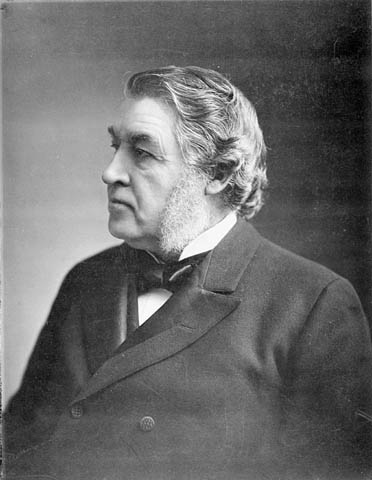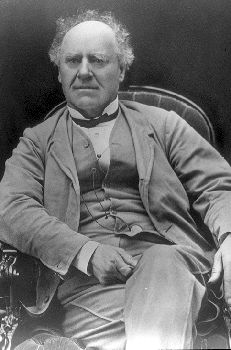
Flourishing Colony
Nova Scotia entered Confederation reluctantly. Through thousands of years of Mi’kmaq rule, and then European settlement beginning in the early 1600s, the people of the area had always had a strong sense of independence. In 1848, Nova Scotia became the first colony in British North America (BNA) to achieve responsible government, a form of democratic self-rule. (See Nova Scotia: The Cradle of Canadian Parliamentary Democracy.)
By the 1860s, the coastal settlements of the colony were flourishing. This was thanks to shipbuilding, fishing, farming and trade. But Nova Scotia faced a crossroads: Should it join the proposed Dominion of Canada, or should it remain a separate British colony?
Against Confederation
Joseph Howe, a journalist and politician, had led the drive for responsible government. But he opposed joining Canada. He felt that Nova Scotia would continue to flourish on its own but would be neglected in a larger country. He also argued that the 331,000 people of the colony should decide the matter.
Howe emphasized Nova Scotia’s geographic and cultural distance from Canada West (present-day Ontario) and Canada East (present-day Quebec). “Did anybody ever propose to unite Scotland with Poland or Hungary?” he asked in the Halifax Chronicle. “Inland countries 800 miles off in the very heart of Europe.” To Howe, the situation in British North America was similar.
Most Nova Scotians lived in prosperous shipping, shipbuilding and farming communities. They saw little benefit in uniting with the other BNA colonies. Most felt closer family and economic ties to the New England states than to the distant Province of Canada.

Tupper and Confederation
The Nova Scotia delegates to the 1864 Charlottetown and Quebec Conferences were committed to making the colony part of Confederation, despite popular opposition. (See Confederation’s Opponents.) Advocates for Confederation argued that joining the new country would provide greater security against possible American expansionism. There would be a wider domestic market for Nova Scotia trade goods. And, most importantly, a national railway linking the Atlantic colonies to Ontario and Quebec would be built and largely paid for by the new federal government. (See Intercolonial Railway.)
Premier Charles Tupper had led the Nova Scotia delegates at the 1864 conferences. In 1866, at the end of his electoral mandate, he used his government’s majority in the colonial legislature to pass the terms of Confederation agreed to in Quebec City. (See also Quebec Resolutions.)
When Nova Scotia officially became a Canadian province in 1867, two newspapers summed up the opposing views. The British Colonist declared: “The days of isolation and dwarf-hood are past; henceforth we are a united people, and the greatness of each goes to swell the greatness of the whole.” On the other hand, the Morning Chronicle mourned: “Died! Last night at 12 o’clock, the free and enlightened Province of Nova Scotia.”
On the Halifax waterfront, protesters burned Tupper in effigy, along with a live rat. In the town of Yarmouth, some buildings were draped in black cloth in protest.

Repeal Movement
Although Tupper had forced Confederation through the legislature, the citizens who could vote rejected it. In the joint 1867 provincial and federal election, Howe’s Anti-Confederation League and others opposed to Confederation won 36 of 38 seats in the provincial legislature. They also took 18 of 19 seats federally. Tupper was the only supporter of Confederation elected to the new federal Parliament.
Led by Howe, anti-Confederation Nova Scotians fought unsuccessfully for two years to repeal the union. (See Repeal Movement.) In 1868, Tupper and Howe worked out a common way forward. Having failed at every turn to take Nova Scotia out of Canada, Howe decided he could do more to help his province by working inside the federal government. In 1869, at the invitation of Prime Minister John A. Macdonald, Howe joined the federal Cabinet. He would later play an important role in bringing Manitoba into Confederation. (See Manitoba and Confederation.)
Fathers of Confederation
Nova Scotia’s Fathers of Confederation — those men who attended one or more of the Charlottetown, Quebec and London Conferences — include Charles Tupper, Adams G. Archibald, R.B. Dickey, W.A. Henry and Jonathan McCully.
See also: Mothers of Confederation; Confederation: Collection; Confederation: Timeline.

 Share on Facebook
Share on Facebook Share on X
Share on X Share by Email
Share by Email Share on Google Classroom
Share on Google Classroom